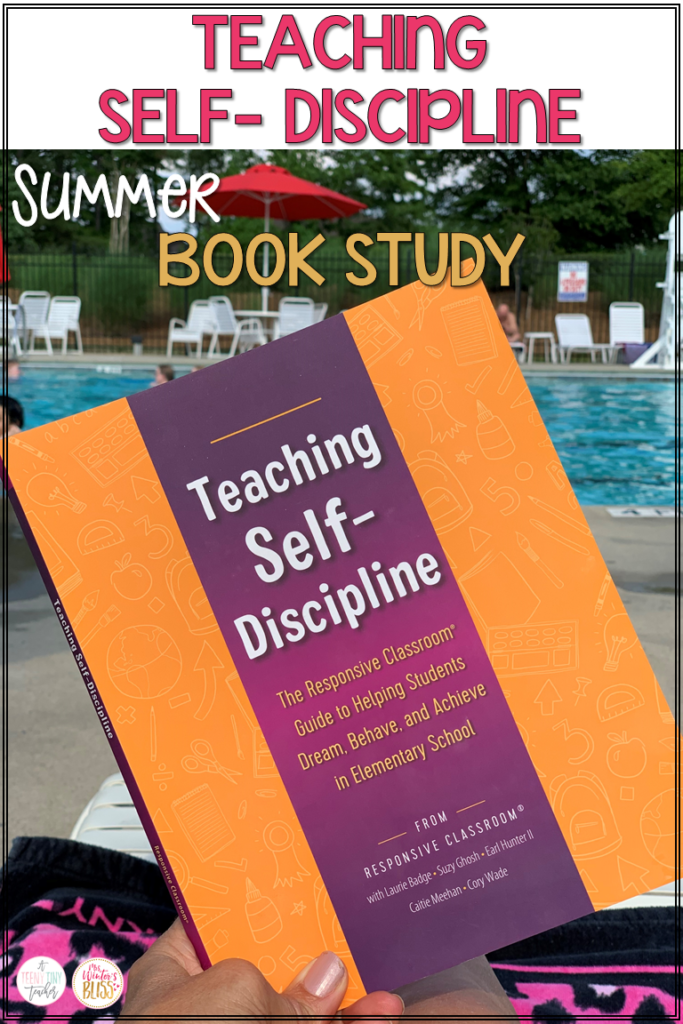
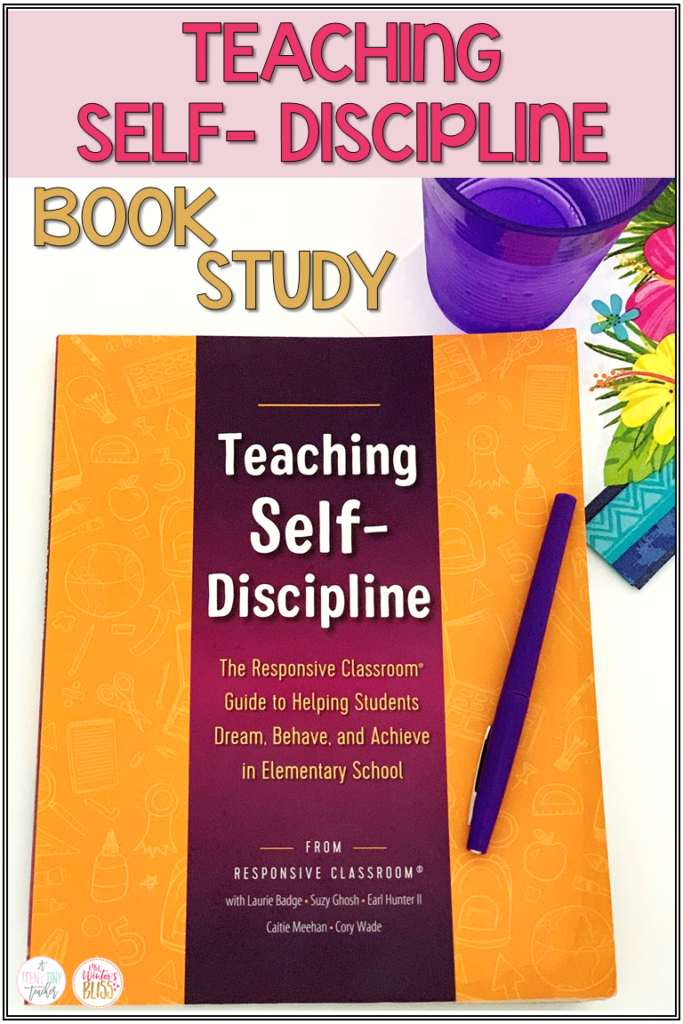
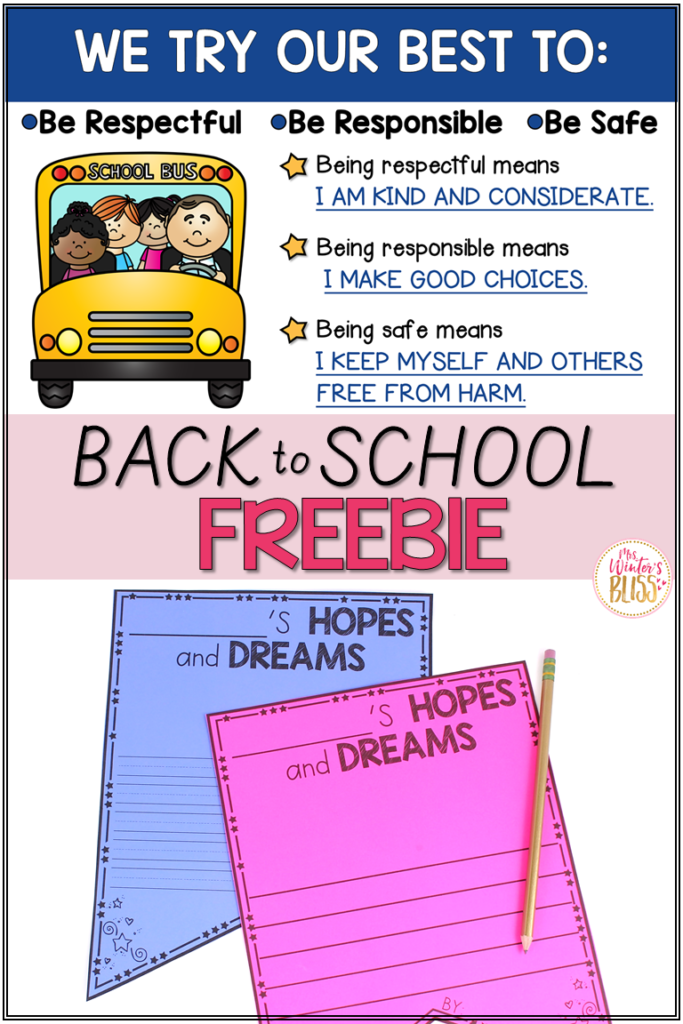
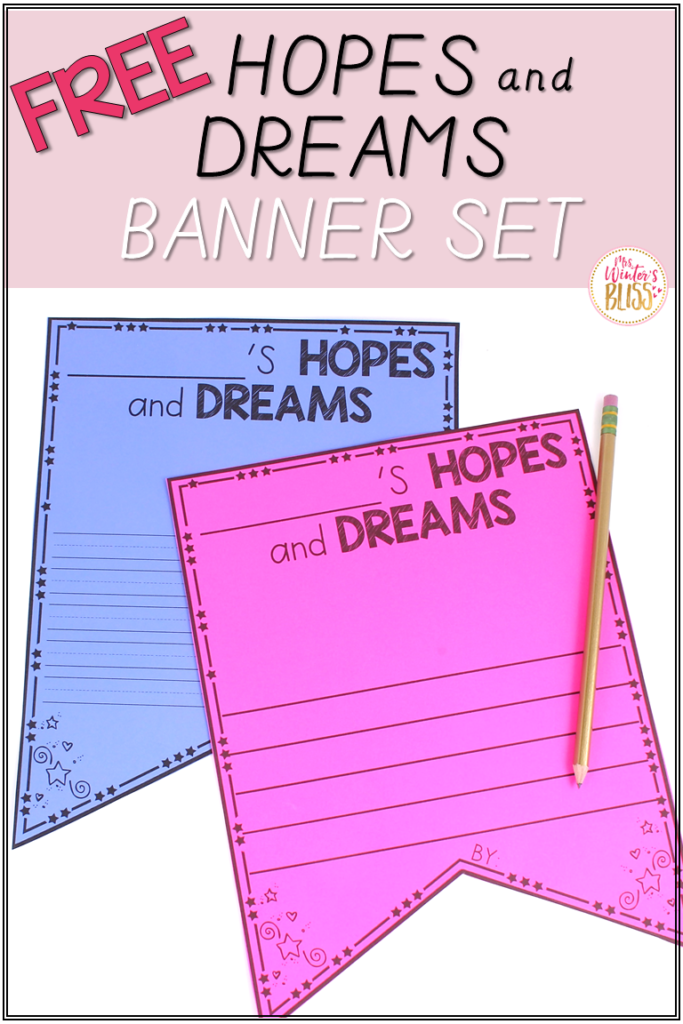

When students help establish classroom rules they are able to see the connection of following the rules and obtaining the goals they set for themselves.
Hi Friend!
With the 4th of July now behind us it really feels like summer is in full swing! I hope are feeling relaxed and finding ways to recharge! And of course I hope you’re still enjoying and gaining new insights from our summer book study on Teaching Self-Discipline!
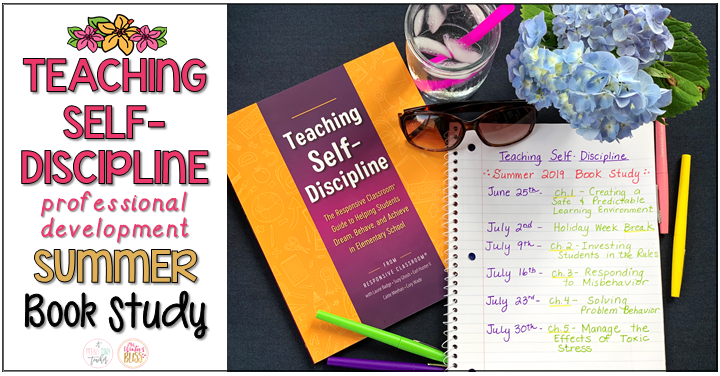
In my last post I focused on Chapter 1 which discussed organization in the classroom, the use of positive teacher language, and how to teach and model routines and procedures.
Today I’m excited to take a closer look at Chapter 2 which moves into the important topic of how we get students invested in the classroom rules. I’ve shared my thoughts as well as the Facebook Live chat below!
We are reminded that while some may have negative associations with the idea of rules, it is essential that guidelines for behavior are clearly established to ensure all students feel safe and can reach their full potential. Rules create a sense of predictability a climate of respect, help students learn self-control and develop social awareness. Bottom line… You’ve got to have them!

Chapter 2 begins by explaining a process for developing rules which starts with having students set personal goals for the year, and then connects their goals to the rules. They then move on to share tips for helping ensure students to actually follow the rules and gives some quick tips for what to do when they don’t.
There’s a lot of important and useful information to unpack, so let’s get started!
Students Hopes and Dreams
It makes perfect sense to start the year by talking with students about their hopes and dreams for the year, and that’s just what the book suggests! Students may need guidance to ensure their goals are realistic,achievable and focused on learning.
To help them do so the text suggests talking about the work they will do in the classroom. You might allow students to explore and try out materials like math manipulatives and then talk about what they hope to be able to do with those things by the end of the year. Sharing your own hopes and dreams for the year is another way to model the type of goals you expect from students. Finally, you can be more specific than asking what they hope to achieve “this year”. Instead, ask what they hope to learn specifically in the classroom. This will help ensure goals are attainable and focused on academics and/or social emotional skills.
Once goals are established they should be shared with the class, posted in a visible spot, and referred back to as the year progresses. By doing these things you will your students to develop more respect and awareness for the goals of their classmates.

DOWNLOAD this FREE Hopes and Dreams writing and bulletin board resource here!
Allowing parents the opportunity to share their own hopes and dreams for their child is a wonderful way to build a positive rapport with them. In the first days of school I always send home a welcome letter and questionnaire for parents to complete. Below is a sample of the letter I send home.
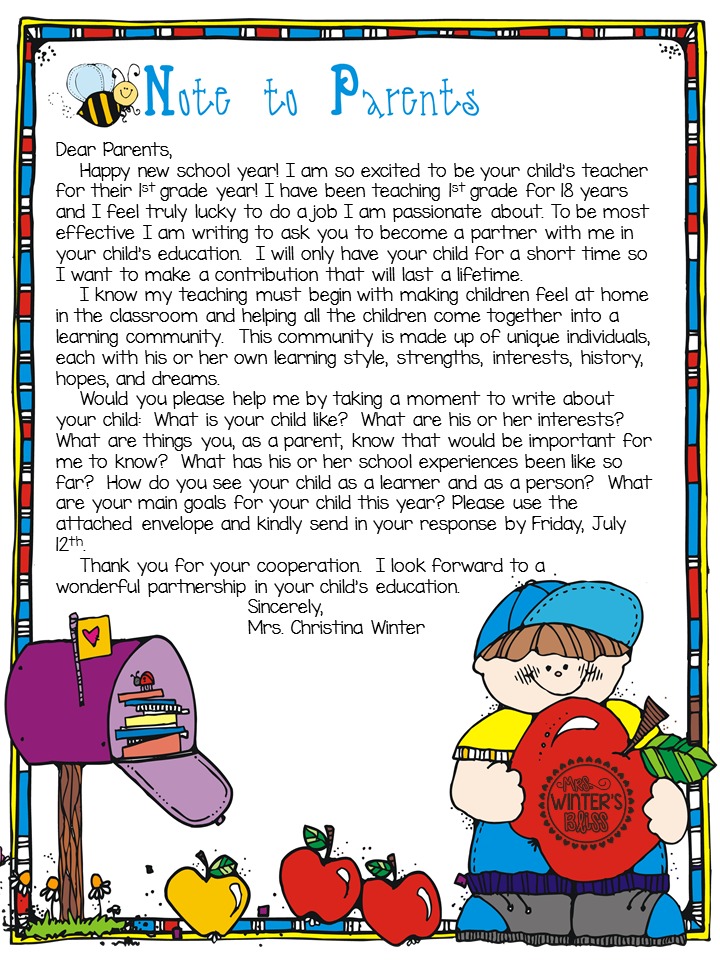
Get the EDITABLE parent letter in my TPT shop here
In the questionnaire I ask them to share their child’s strengths, challenges, likes, dislikes and what goals they have for them during their year. Do you have specific questions you like ask parents? They can be a great source of information and I think they really appreciate the chance to share about their child.
Connecting those Goals to the Rules

Once goals have been established, the text suggests then asking, “If these are our hopes and dreams, what rules will we need to help us make them come true?” Allow students to generate a long list of ideas. Remind students to frame them in the positive, as this will help develop self-control and responsibility to the group.
Once the long list has been created you can start to categorize or group them. The text suggests grouping them into four general categories: 1) Taking care of ourselves, 2) Taking care of others, 3) Taking care of materials, and 4) Taking care to do our best work. Let the kids adjust the wording of the categories, if needed. The process of getting to them is more important than the exact wording. This collaborative approach to developing the rules helps students see that everyone’s goals are important and the rules are there to help everyone succeed.
I like how Kristin (A Teeny Tiny Teacher) has categorized the rules in a positive way! You can download a FREE editable poster below!
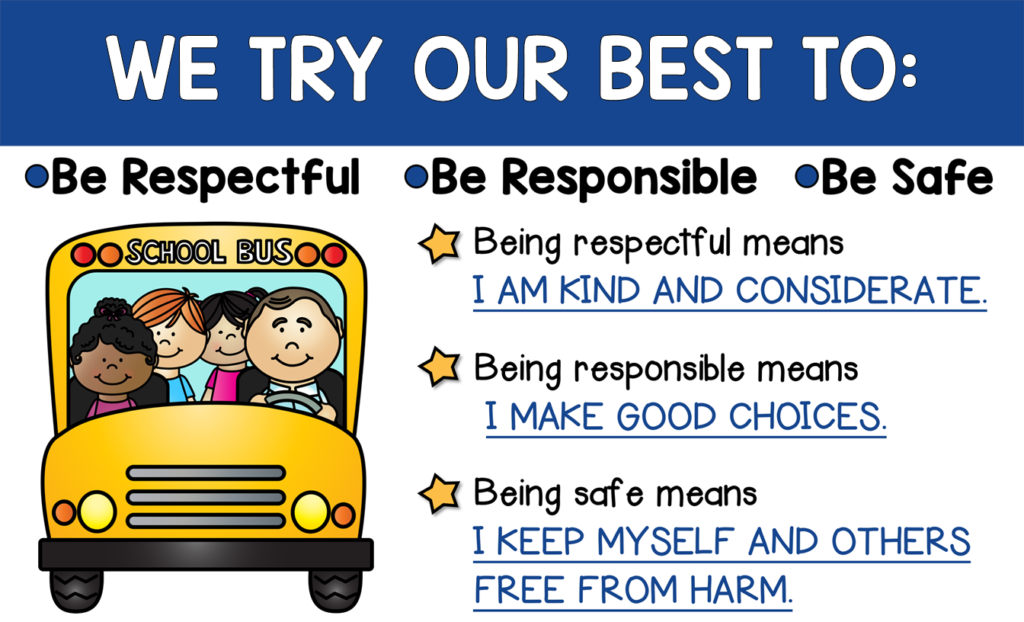
DOWNLOAD the EDITABLE FREE classroom rules poster HERE
The text addresses some tricky topics regarding the development of rules. For example, “Try your best” and “Have fun” are very subjective. They look very different for each student. Plus, you don’t want someone saying, “Well math isn’t fun today, so I don’t have to do it!” The Golden Rule is one I remember being taught by my 1st grade teacher, but it doesn’t always work so well because some students take it too literally. If it does come up, you can explain the bigger idea behind it of treating others with kindness and respect.
Once the final list of rules is established, you’ve got to connect them back to the goals they set for themselves. This helps students build ownership over the rules and see that they exist to help everyone achieve their goals.
Finally, you’ll want to find ways to celebrate and share the rules with families. Having students sign the poster that displays the rules seems effective. I do like sharing the list of rules with families through a letter such as this that I’ve previously sent home.
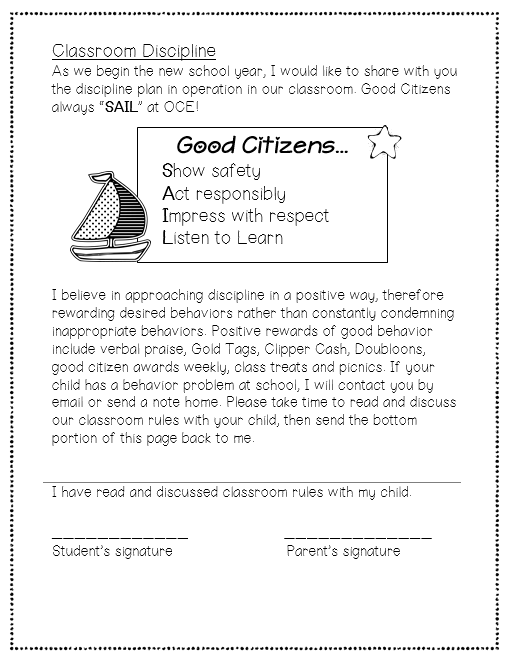
The sample letter on page 59 the text provides is pretty good! I like how it suggests parents place the list in a prominent place and review them often with their child. How do you communicate the rules to families?
Helping Students Follow the Rules
As we know, just because a student can tell you the rules doesn’t mean they will always follow them! As with everything else, in order to be successful at following them they need encouragement, support and PRACTICE!

The text suggests specific strategies teachers can use to help students understand how to apply the rules to life in the classroom. They include:
Using teacher language that reinforces positive behaviors. I talked a lot about the power of teacher feedback in this post and also mentioned in my last post on Chapter 1. Take a look for more information on the importance of teacher language. It’s powerful!
Holding a structured discussion. Keep them short and closely linked in time to the activity or situation you are discussing. The discussion could be in preparation for an event or activity or take place after an event to help students reflect. I like the idea of using the T-chart with the questions “What would it look like?” and “What would it sound like” if students were following a certain rule. When working with older students I have added a third question, “What would it feel like”. It provides a really clear structure for the discussion and helps students more deeply understand the rule and its importance.
Role-Playing Not to be confused with interactive-modeling (which shows how to follow a procedure), role-playing is used to demonstrate situations that can be handled in a number of different ways. It is best if the scenarios chosen come directly from life in the classroom. Examples the text provides include difficulty sharing, laughing at others mistakes, overreacting to accidents, and excluding others. Can you think of other common scenarios that come up in daily classroom life that might be useful to role-play?
The text lays out the steps typically used in a role-play and reminds us that there can be several routes to solving a problem. I love that this strategy leaves students with an expanded repertoire of behavior choices for dealing with these common situations.
When Students Begin to Stray from the Rules
As teachers we know that despite our best efforts to prepare students for following the rules, there will still be times when behavior goes off course. The text provides a few helpful suggestions for what to do when students are just beginning to stray from the rules.
As soon as you notice behavior starting to get off task you can use visual and verbal cues to redirect. It can be as simple as making eye contact with the child, saying their name, or using reminding or redirecting language. These cues are quick and don’t require you to stop what you’re doing to fully explain the rule. They give the student the opportunity to self-correct and helps them develop self-control.
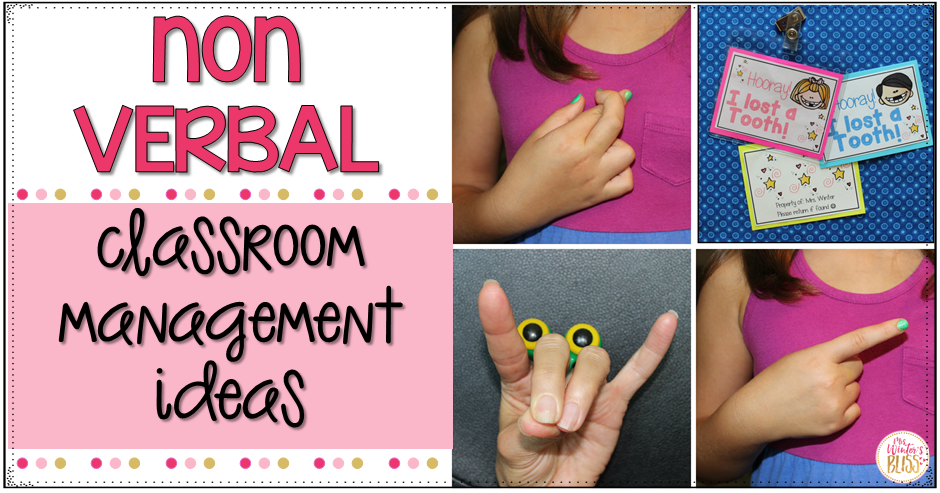
In this post I shared some of my fun (and super effective!) hand signals I taught my students. There are non-verbal signals for asking to use the bathroom to use the bathroom, quieting down, and ones that allow me to check for understanding during lessons. They are so helpful and so easy to implement!
The text does remind us not to overuse these cues and reminders, and I think that is an important point. It won’t take long for students to realize they don’t really have to control themselves right away if they just keep getting reminders. There are times when you’ll need to use logical consequences- a topic we’ll get into in Chapter 3!
Chapter 2 reminded me of how much time must go into establishing rules and how important it is to directly connect students’ goals to those rules. It takes many different lessons, done all throughout the year. What about you? What was your big take-away from Chapter 2? Anything surprise you? I’d love to read thoughts, questions and ideas in the comments!
Be on the lookout for next week’s post which will focus on Responding to Misbehavior. Until then, I hope you’ll keep making the most of your time off! Enjoy it and thanks for reading along with me!









